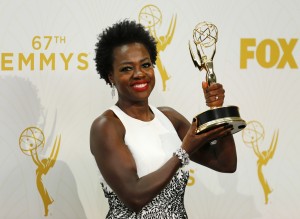Diversifying the Casting Process — How Projection Errors Hold Back Minority Actors
 If you’ve ever taken a basic psychology course, you’ve probably come across the idea of projection errors. This phenomena is quite common, and it occurs when an individual “projects” his thoughts, feelings, and judgements onto another person; wrongfully assuming that they share those same experiences and beliefs. So what does this have to do with casting?
If you’ve ever taken a basic psychology course, you’ve probably come across the idea of projection errors. This phenomena is quite common, and it occurs when an individual “projects” his thoughts, feelings, and judgements onto another person; wrongfully assuming that they share those same experiences and beliefs. So what does this have to do with casting?
Although many roles do not specify a character’s ethnicity within the screenplay; directors, producers, and casting directors commonly read scripts and project their own expectations and experiences onto the character (i.e. I relate to this protagonist and I am white, therefore this protagonist must also be white). It happens subconsciously, and grossly limits the opportunities for minority actors. To quote Viola Davis, “You cannot win an Emmy for roles that are simple not there.” And it’s true — if we project our own racial expectations onto a character before the audition processes has even begun, minorities face a huge disadvantage given that Hollywood’s elite are primarily white, straight men.
It’s important to iterate that projection errors occur subconsciously. Meaning that directors, producers, and casting directors are not purposely perpetuating prejudice. They’re simply human. However, because we are human — and prone to error — it is paramount that we implement strategies to correct these faults.
To combat the discrimination caused by projection, it is imperative that producers, directors, and casting directors open up auditions to all racial ethnicities, unless a role specifically calls for a person of a specific race as a story element. This type of common sense casting, though rarely done, can cause very positive results for the production as a whole.
In my most recent film, for example, one character (as written) had a southern drawl. Myself and the director, therefore, envisioned the character as Caucasian (although the script did not specifically call for a racial identity). Instead of closing this auditions to Caucasian actresses, we opened the audition to all ethnicities, and eventually cast an Asian woman for the part. She was by far the best performer for the role. Without these diversified casting procedures, we never would have seen her for the audition, and the film would have suffered as a result.
If we intend to overcome the “celluloid ceiling” we must become self aware of subconscious (and conscious) practices that perpetuate the existing cycles of discrimination. We all have flaws. We all make mistakes. And that’s OK… as long as we constantly challenge ourselves to correct these behaviors.
It is also important to note that this, of course, is not the cure to Hollywood’s diversity problem. When approaching problems of this magnitude, it is necessary that we break down barriers into smaller, manageable, and “doable” actions to perpetuate change. If we continue to take these types of small steps in the “right direction,” we will eventually find that we’ve reached our destination.
About Melissa Izbicki
 Melissa Izbicki is a narrative and commercial film producer located in Los Angeles, California. Izbicki graduated from Chapman University’s Dodge College of Film and Media Arts with an emphasis in producing and is currently an MBA candidate at Chapman University’s Argyros School of Business and Economics. Her latest feature film, The Big Day, is scheduled for release in late 2016. For more details, visit www.TheBigDayMovie.com
Melissa Izbicki is a narrative and commercial film producer located in Los Angeles, California. Izbicki graduated from Chapman University’s Dodge College of Film and Media Arts with an emphasis in producing and is currently an MBA candidate at Chapman University’s Argyros School of Business and Economics. Her latest feature film, The Big Day, is scheduled for release in late 2016. For more details, visit www.TheBigDayMovie.com
Follow Melissa on Twitter @MelissaIzbicki
